Unleashing the power of a Harley is an unrivaled experience, and when it comes to the epitome of performance and design, the Harley EVO motor stands out. This iconic engine, celebrated for its reliability and style, has been the heart of many legendary motorcycles.
With an impressive lineage that traces back to Harley’s golden age, the EVO engine has been an integral part of the brand’s history, continually pushing the boundaries of innovation and excellence. From the subtle purr at idle to the exhilarating roar at full throttle, the EVO motor encapsulates the spirit and power of Harley Davidson.
So buckle up as we embark on a journey through the history of the Harley EVO motor — exploring its evolution, identifying the best years of its production, how it saved Harley Davidson, and then understanding why it remains an iconic symbol of performance and design in the motorcycle world.
So keep reading and lets get into the details of the best year Harley evo motor yet!
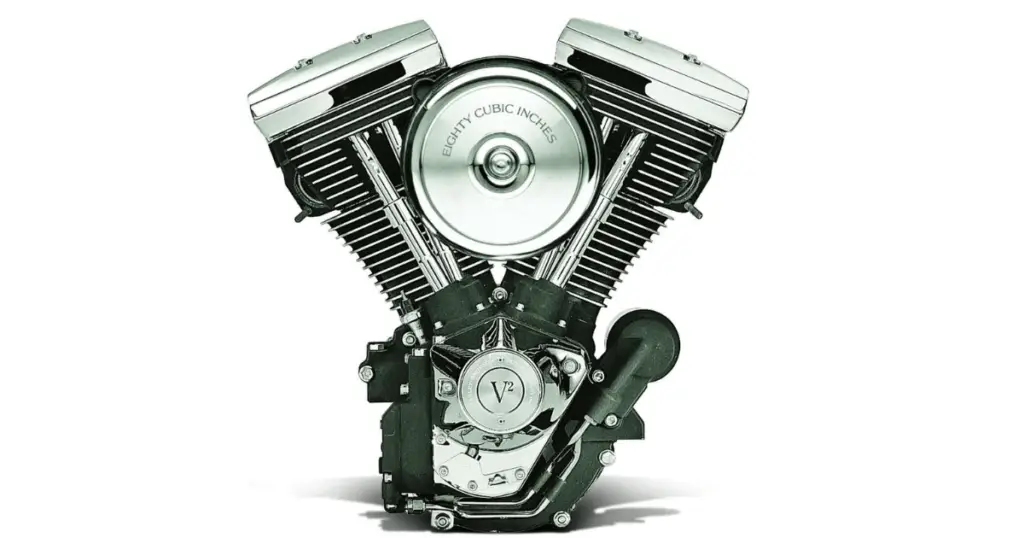
Why Was The Harley EVO Motor So Badass?
There’s no denying the impact and legacy of the Harley Davidson Evolution Engine, commonly known as the EVO motor. Launched in 1984, this classic V-twin engine became the heart of numerous Harley Davidson models for over 15 years. But what made this engine so legendary? Let’s dive into the unique characteristics that marked the EVO motor as a game-changer in the motorcycle world.
Power & Performance
The Harley EVO motor was known for its remarkable power and performance. Despite its compact size, EVO engines could generate impressive horsepower and torque. Riders cherished the EVO for its strong acceleration and high-speed stability.
Raed More: Best Spark Plugs for Harley Davidson Evo: Bikes Evolve Today
Durability & Reliability
Harley Davidson built the EVO motor with durability in mind. The engine’s robust construction and high-quality materials ensured that it could withstand rigorous riding conditions. Additionally, regular maintenance could keep these engines running smoothly for hundreds of thousands of miles.
Customization & Upgrade
Another aspect that made the EVO engine badass was its potential for customization and upgrades. The engine’s simple design allowed riders to modify various components easily. From boosting power with performance parts to enhancing the engine’s aesthetics, the possibilities were endless.
Related article: What Is High Mileage For A Harley Davidson?
Hey you! Keep your Harley Davidson running in tip top shape with these suggestions:
What Bikes Came With An Evo Motor?
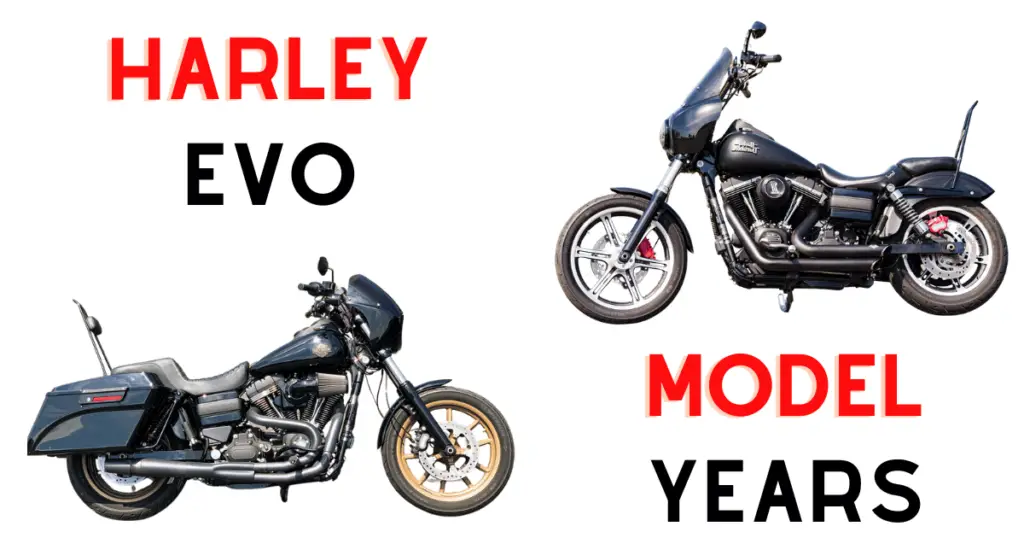
As the EVO motor evolved, so did the Harley models that housed it. Notable improvements were seen in models like the Sportster 1200 and Fat Boy. For instance, the Sportster 1200, which initially featured the EVO motor, saw enhancements in its engine efficiency and overall ride quality. Similarly, the Fat Boy models from 1996 to 1999 incorporated the refined EVO engines, offering a blend of power and smoothness that was previously unmatched. These models stand out as testaments to the EVO’s adaptability and Harley-Davidson’s dedication to refining their machines.
Sportster 1200 (1986-1995)
The Sportster 1200, one of the earliest models to feature the EVO motor, is a prime example of Harley-Davidson’s engineering prowess. From 1986 to 1995, this model underwent significant enhancements, particularly in engine efficiency and reliability. The EVO engine’s integration into the Sportster 1200 brought a notable improvement in power delivery and smoothness of operation. Riders appreciated the bike’s robust performance, coupled with the classic Harley aesthetic. The Sportster 1200 with the EVO motor became a symbol of reliability and an icon in the cruiser segment, appealing to both long-time Harley enthusiasts and new riders.
Softail Custom (1994)
The 1994 Softail Custom’s incorporation of the EVO motor marked a significant milestone in the Softail series. This model stood out for its unique blend of classic design and modern performance. The EVO engine’s introduction to the Softail platform brought a new level of power and reliability to the model. The Softail Custom, known for its low-slung, custom-style design, was further enhanced by the EVO’s robust performance. This combination of style and power made the 1994 Softail Custom a highly sought-after model among Harley aficionados, offering a ride that was as smooth as it was powerful.
Fat Boy (1996-1999)
The Fat Boy models from 1996 to 1999 are particularly noteworthy for their use of the refined EVO engines. These years saw the Fat Boy evolve into a more powerful and reliable machine, thanks to the EVO’s enhancements. The bike’s distinctive thick tires and solid disc wheels, paired with the powerful EVO engine, created a perfect blend of style and performance. The Fat Boy became a favorite for its commanding presence and smooth ride, encapsulating the essence of the Harley-Davidson spirit. The EVO motor’s reliability and power output during these years solidified the Fat Boy’s status as a legendary model in Harley’s lineup
You should read this, however: Harley Evo Years To Avoid (+Some History of The Engine)
What Were The Best Years For The EVO Motor?
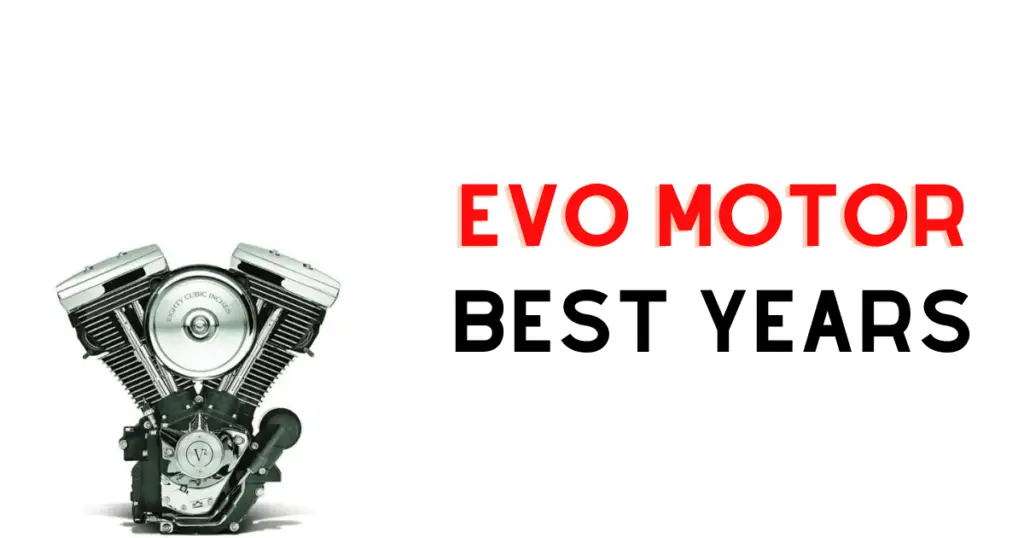
Determining the “best” years for the EVO motor can be subjective, as it often depends on personal preferences and experiences. However, many Harley enthusiasts generally agree that the best year Harley EVO motor was found between 1991 and 1999 due to its peak performance and reliability.
During this period, Harley Davidson made significant improvements to the engine’s design, which resulted in better horsepower, torque output, and overall performance. The switch from a carburetor to electronic fuel injection contributed to better fuel efficiency and smoother operation. Additionally, the introduction of hydraulic lifters reduced valve train noise and increased engine reliability throughout all subsequent EVO engines.
Related article: Harley Evo Cranks but Won’t Start? Here’s What To Do
What Determines The “Best”?
Determining the “best” years for any engine, including EVO engines, involves considering several factors. This could include the engine’s performance, reliability, durability, and the type of models it was used in. It’s also crucial to consider the various improvements and changes that were made to the engine over time.
History Of Harley’s EVO Motor
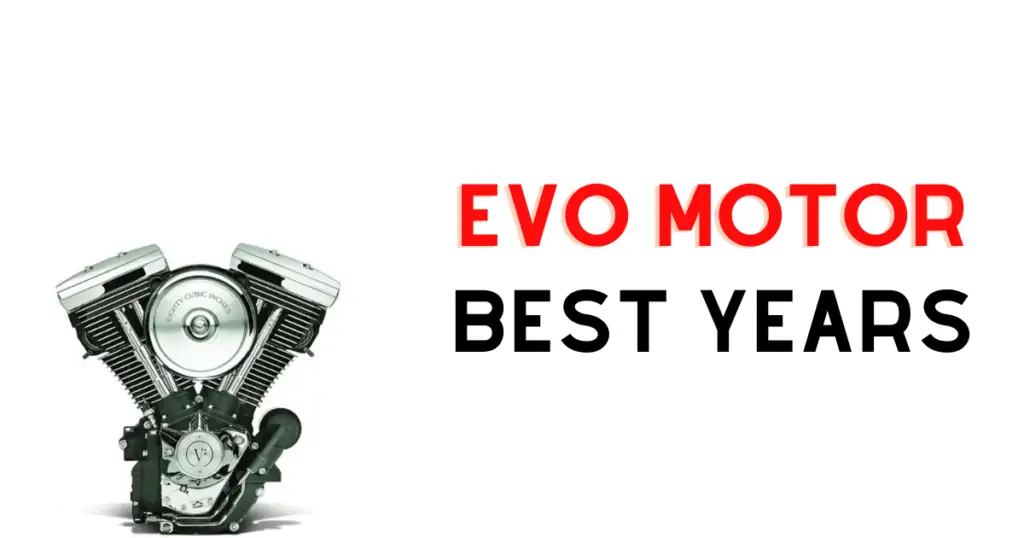
The Evolution engine, or the Blockhead as it was affectionately known, was Harley Davidson’s solution to the problems that plagued its earlier engines. The EVO motor was more powerful, more reliable, and easier to maintain than its predecessors.
What Year Did The EVO Motor Come Out?
Harley Davidson introduced the EVO engine in 1984 and was used in a variety of Harley Davidson models until 1999. This year Evo motor (1984), and subsequent period of production, marked a significant turning point in Harley Davidson’s history and helped solidify the company’s reputation for producing high-quality, powerful motorcycles.
Keep reading: Harley 96 vs 103
Why Is The EVO Year Important?
The year of an EVO motor can tell you a lot about what to expect from it. Early models of the EVO engine, particularly those produced from 1984 to 1987, had several common problems that were later addressed in subsequent model years.
By contrast, EVO motors produced from 1991 to 1999 are generally considered to be the best years. During this period, Harley Davidson made several significant improvements to the engine’s design, resulting in better performance and reliability.
Overview of The Evo’s Journey Over Time (Best and Worst Years Mentioned)
The EVO motor’s journey wasn’t without its challenges. In the initial years from 1984 to 1989, riders faced issues like crankshaft seal leakage and oil pump failures. These early models, while pioneering, highlighted the teething problems of a groundbreaking design. However, Harley-Davidson’s commitment to improvement was evident in the subsequent years. Between 1989 and 1991, the company made significant strides in addressing these issues. The introduction of better seals and improved oil pumps marked a turning point, enhancing the EVO’s reliability and performance. This period was crucial in setting the stage for the EVO’s later success.
Common EVO Motor Problems
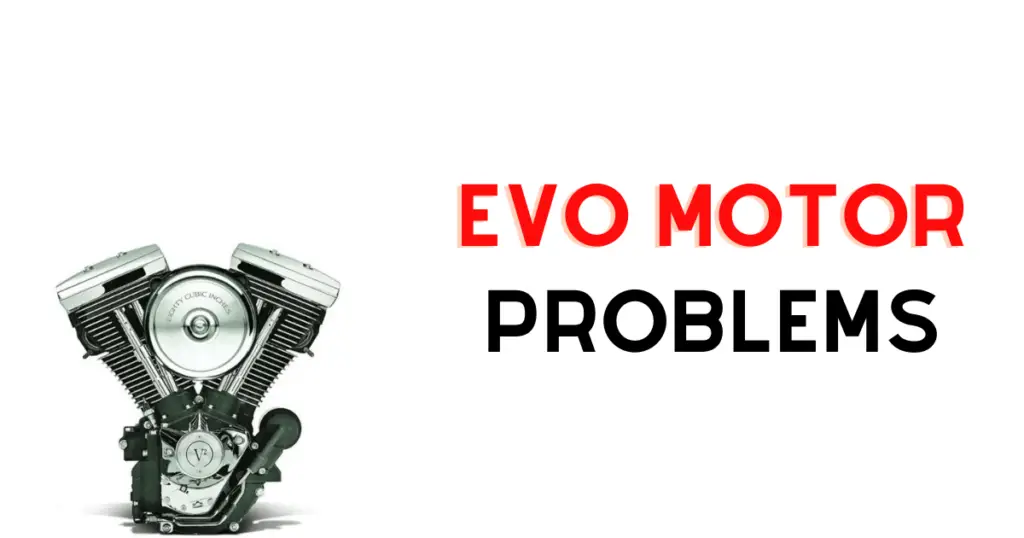
The Harley Davidson EVO motor, while renowned for its reliability and performance, did encounter its share of issues over the years. Understanding these common problems can help owners and enthusiasts maintain their bikes more effectively.
Oil Leaks
One of the most frequent issues with the EVO motor was oil leaks. These leaks often originated from the rocker covers, pushrod tube seals, and around the base of the cylinders. Regular maintenance and replacing aging seals and gaskets can mitigate this issue.
Cam Chain Tensioner Wear
The EVO motor’s cam chain tensioner was prone to wear over time. This wear could lead to reduced engine performance and, in severe cases, potential engine damage. Upgrading to a hydraulic tensioner system or regular inspections can help prevent these problems.
Vibration-Induced Damage
Excessive vibration, a characteristic of older Harley models, could lead to loosening of bolts and fasteners, particularly in the EVO motor. Regularly checking and tightening these components is crucial for maintaining the engine’s integrity.
Ignition System Failures
The EVO motors occasionally faced issues with their ignition systems, including faulty ignition coils and worn-out spark plugs. Keeping these components in check ensures smooth engine performance.
Charging System Issues
Problems with the charging system, such as a failing stator or voltage regulator, were not uncommon. These issues could lead to battery drain and electrical problems. Regular testing of the charging system can help identify issues early.
Exhaust Bracket Breakage
The exhaust brackets on some EVO models were susceptible to cracking and breakage due to the engine’s vibration and heat. Inspecting and reinforcing or replacing these brackets can prevent exhaust system failures.
Carburetor Issues
For models with carburetors, issues like clogging and improper tuning were common, especially if the bike was not regularly ridden. Regular cleaning and adjustment of the carburetor can maintain optimal engine performance.
Did EVO Motors Suffer From The Twin Cam Problem?
EVO motors did not suffer from the same problems as the Twin Cam engine. The EVO motor was designed with a single cam, which avoided the issues associated with the chain-driven cams found inside the Twin Cams. However, the EVO was still vulnerable to cam chain tensioner wear in its own right.
content continues below
Problematic Harley Models:
- Most annoying street glide problems
- Nasty ultra classic problems to avoid
- Dreaded road king problems
- Harley Years to Avoid Master List
Other Harley Motor Reviews:
content continues below
FAQs and Related Questions
What Year EVO Motor Should I Get?
Are EVO Motors Reliable?
What Models Came With The EVO Motor?
Are Evo Harleys Reliable?
Conclusion
The Harley Davidson EVO engine has left a significant mark in the world of motorcycles. Its blend of power, performance, and durability has made it a favorite among Harley enthusiasts. Whether you’re a Harley owner looking to understand your bike better or a prospective buyer considering a classic Harley, understanding the history behind the EVO motors, its strengths, and its weaknesses, can be very beneficial.